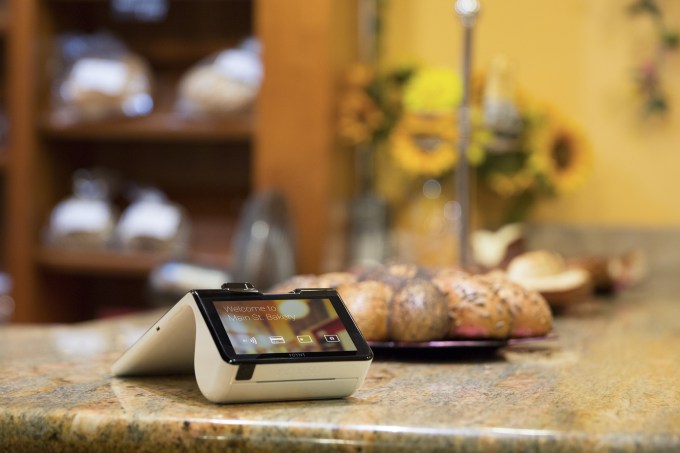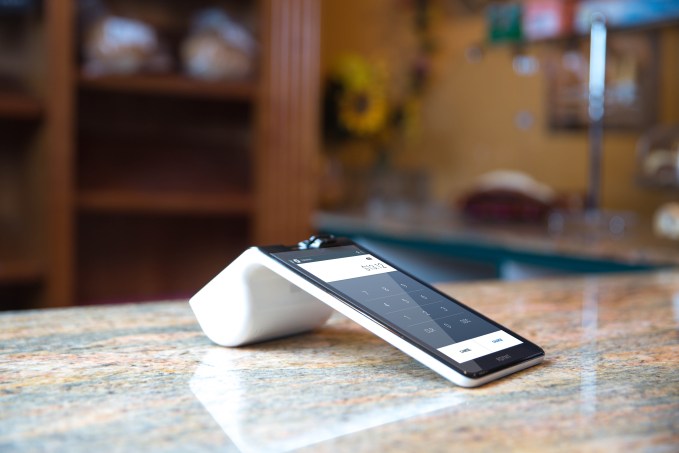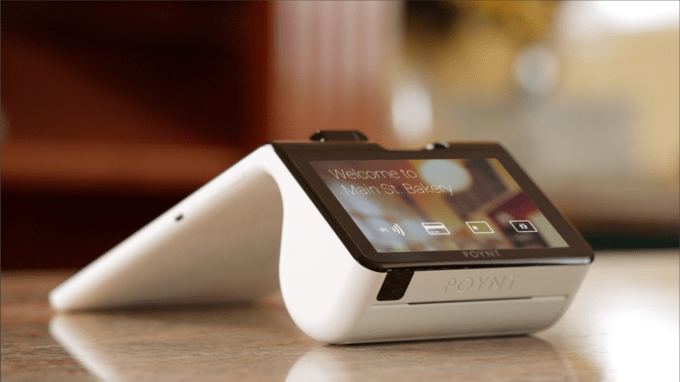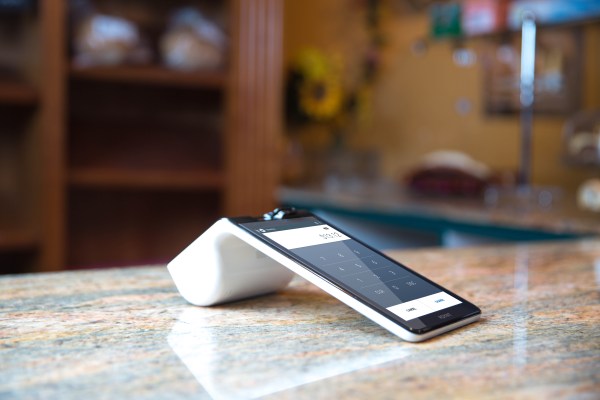The former head of Google Wallet and longtime PayPal exec, Osama Bedier, is this morning revealing his new company Poynt, a “future-proofed” payment terminal that combines an Android-based tablet with a hardware docking station, and includes support for all modern payment technologies, including traditional magstripe cards, EMV (chip and pin), NFC (Google Wallet and Apple Play), Bluetooth, QR codes, and beacon technology, in an all-in-one device sold at cost.
Palo Alto-based Poynt has raised a Series A round led by Matrix Partners, which includes participation from Webb Investment Network (founded by Visa board member Maynard Webb), Nyca Partners (founded by former Visa VP Hans Morris), and other angels. The size of the round is undisclosed.
Explains Bedier, he saw the opportunity to enter the payments market himself as the U.S. finally got on board with the transition to EMV, which will, as of October 2015, include a liability for merchants whose payment terminals don’t support the more secure technology.

“For the first in payments infrastructure history, every one of the 16 million terminals in the country will change over to a different device…in the history of payment terminals, that’s never happened before. No one has ever been able to change these things before,” says Bedier, referring to the way merchants’ adoption of new technology has been hit-or-miss at best, and usually includes a lot of resistance.
If anything, the now numerous payment card breaches have encouraged retailers to change their tune. They’re now aware that digging their heels in on payment terminal upgrades has put their own customers at risk, and that threatens their bottom line.
With Poynt, the company is working with banking partners to become their preferred payment terminal recommendation. Banks usually offer merchants a range of price options, and at a competitively priced $299, Poynt has a good shot at being a go-to choice.
The company says it has booked deals with at least two of the top five U.S. banks, but can’t yet name them.
[gallery ids="1076291,1076290,1076287,1076286"]
The Hardware
As for the payment terminal itself, the Poynt tablet runs a forked version of Android to make it developer-friendly, and includes screens on both sides – one for the consumer and one for the merchant, to prevent the need for the merchant to swivel the terminal around. For plastic payment cards, the system offers a hybrid card reader that can read both sides of the card at the same time, and takes either magstripe or EMV. Consumers, as noted above, can also tap the screen for an NFC payment, or hold their QR code below the designed area.
A printer in the front (the round part, pictured) offers receipts, and there’s also an ethernet port, support for Wi-Fi, 3G and 4G, and a USB extension for things like a cash drawer or scale. Beacon technology is built-in for use with things like customer loyalty programs, or sending offers to mobile devices. And the 8-hour battery allows for portability, such as in cases where sales reps roam the floor, or the device can be plugged into and secured at the register area via the docking station.

Two different quad-core processors are found in the tablet, one that’s the secure area holding the encryption keys for banks so that any payment data is encrypted as soon as it hits the hardware – a requirement for Poynt to be compatible following the EMV transition.
Merchants don’t have to swap out their existing setups involving cash boxes or printers in order to get started with Poynt’s hardware, which could make it appealing to those concerned about their prior hardware investments. The company, however, is targeting small business owners primarily, where switching costs may be more minimal.
The Software
Meanwhile, on the software side, Poynt ships with three apps, a terminal app, a register app and a third “co-pilot” app that offers insights into business data, including transactions as they come in, the performance of loyalty programs, and more. (The app also runs on merchants’ smartphones for remote access to this data.)
These apps can be swapped out as the merchant chooses, and thanks to the software platform (Poynt OS) and connectivity, it can receive updates as needed. Poynt is also working with third-party developer partners including Vend, Kabbage, Swarm, Boomtown, Bigcommerce and Intuit who will build complementary solutions for the Poynt ecosystem. An SDK is now being made available to other interested parties, as well.

This is also where Poynt’s business model comes in. Because it’s selling the hardware at cost to banks and via its website, in hopes of getting mass distribution, the software is where Poynt makes money. “We make 20% of the subscription fees that [the software providers] charge and we share that money back with the acquirer,” says Bedier.
Poynt doesn’t get involved with taking any fees from the payments themselves, however. In addition, he adds that Poynt aims to leverage the thousands of sales reps who today sell payment processing in the U.S., who could now sell software. “It’s become a commodity service over the last ten years…they’re all selling against each other, and churn has become ridiculous,” Bedier says. “We think they could do better selling software.”
